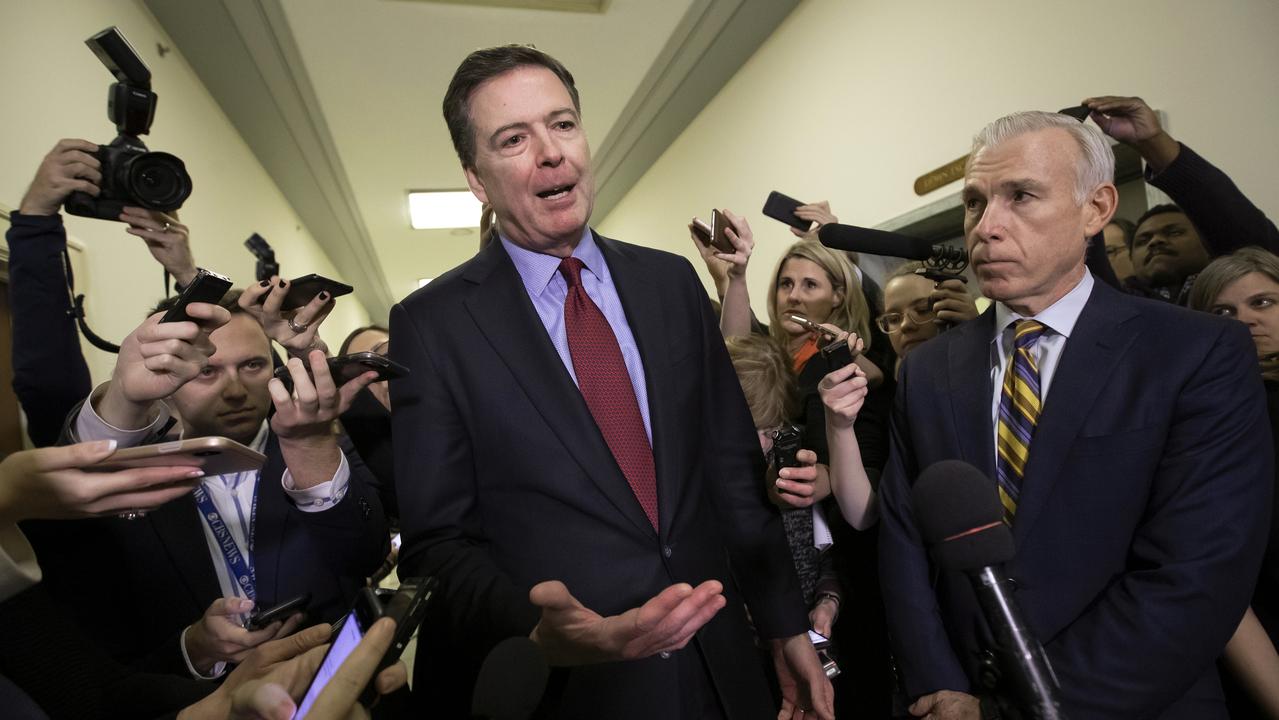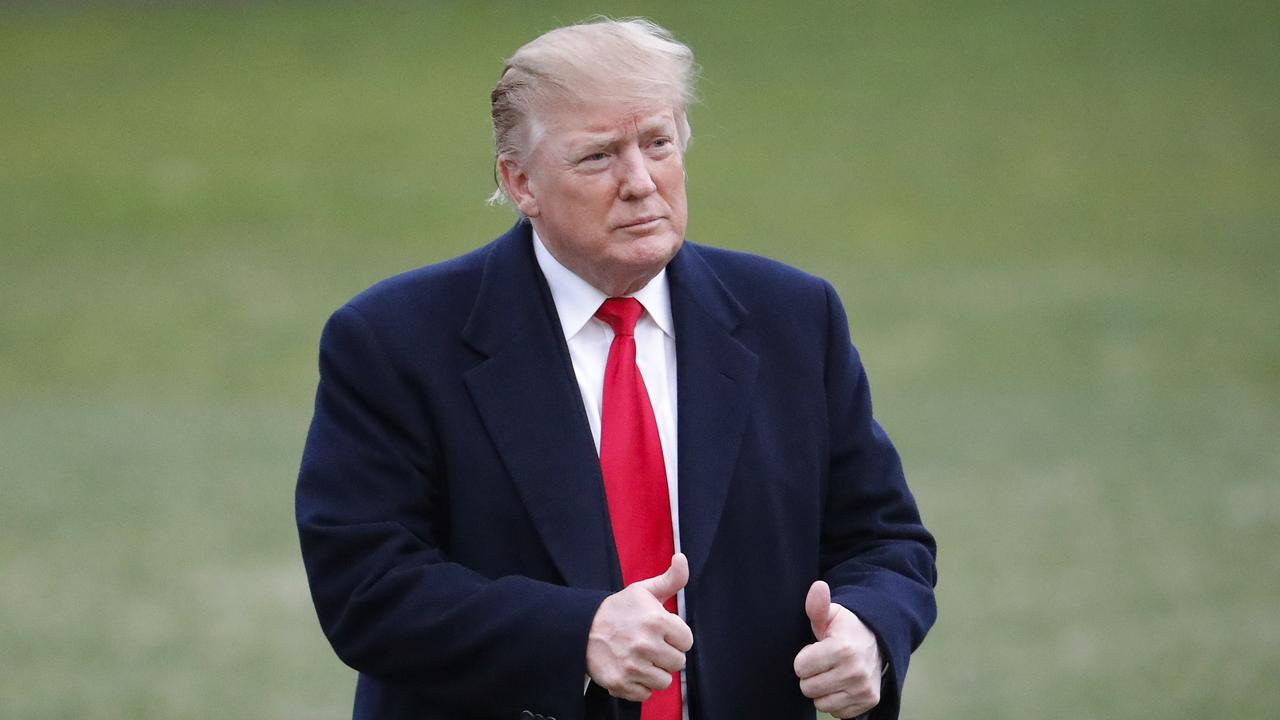
As President Donald Trump ponders a “mini-surge” of a few thousand troops to Afghanistan and Canberra considers supporting the effort, it’s worth recalling a controversial character from last time around. Colonel Harry Tunnell, a US Army officer, commanded a Stryker (light armoured) brigade in Kandahar during Barack Obama’s surge of 2009-12. He was sacked after allegations of a “kill squad” in his unit targeting Afghan civilians, and complaints from allies (notably General Sir Nick Carter, British commander in Kandahar) that he refused to support the counter-insurgency strategy then in effect.
Nobody accused Tunnell of complicity in killing civilians, but critics claimed he was too focused on the “kinetics” — attacking the enemy rather than protecting the population — and failed to support governance and economic development. They argued his belligerence made enemies of potential friends in the community and created a command climate where rogue subordinates thought they had tacit approval to kill civilians.
I was in Kandahar at the time and close to people on both sides of the dispute, including Brits in the headquarters and Americans and Afghans fighting under Tunnell’s command. Without weighing in on the merits of his dismissal, I always thought he made some good points about the then situation — points worth reviewing as we consider surging again.
One grievance against Tunnell was he issued a directive ordering “counter-guerilla operations” rather than counter-insurgency. Tunnell responded that he was simply drawing on official US Army doctrine from the early 1960s. He was right about that.
Before escalation in Vietnam, the army did draw a clear distinction between military aspects of a campaign — defeating guerilla combat units — and broader counter-insurgency efforts including governance, intelligence, rule of law, economic development and other measures to undermine insurgents’ support. Both aspects were regarded as critical, but the military’s counter-guerilla role was seen as its key task and a subset of a larger, primarily civilian, counter-insurgency campaign.
The military’s job was to defeat the guerilla forces, while civilian agencies took the lead in translating battlefield success into long-term political and economic stabilisation. In Vietnam, this distinction still existed in theory, but what was then called “pacification” blurred it in practice, with the army and marines leading governance and development programs such as “winning hearts and minds” and “civic action”.
By the 90s, in places such as Bosnia, military forces increasingly were taking the lead in nation-building during reconstruction and stabilisation operations, simply because they could: they had capable logistics systems and could support and protect their people on the ground, unlike civilian agencies (cut back dramatically after the Cold War).
After 9/11 — and, particularly, the fiasco of the early Iraq occupation, when civilian agencies proved barely able to function in high-threat environments — the military reluctantly took charge of all aspects of counter-insurgency. In principle, civilian agencies were supposed to retain responsibility for civil functions; in practice, they plugged into military life-support systems and command-and-control infrastructure, and were unable to get outside the wire or interact with the population except with military help.
This made military commanders key players, but also diluted their attention from military matters to economics, politics, infrastructure, rule of law, essential services and a host of other issues.
This “comprehensive approach” was enshrined in NATO and US military doctrine after 2006. By the time of Obama’s Afghan surge, it was considered self-evident that soldiers needed to undertake governance and development programs because these things needed to be done and civilians were not in a position to do them. This led to some odd outcomes: in 2011, I worked with a US Navy submarine commander running a provincial reconstruction team on the Afghanistan-Pakistan border, and with an armoured cavalry officer leading a counter-corruption taskforce reforming accounting and banking systems.
An airborne infantry unit I worked with in 2012 was most proud of its agribusiness program, including establishing a local canning factory for fruit exports.
Marine combat units committed months of effort and dozens of lives to repair and secure the hydroelectric dam at Kajaki in Helmand province, and to escort its enormous turbines across the country on giant flatbed trucks.
To be sure, there was a civilian surge also, involving several hundred diplomats, aid officers, civilian defence employees, police and engineers. And thousands of contractors served in the reconstruction effort. But the civilian agencies were dwarfed by the military. They plugged into a military-led and military-defined strategy, where the Pentagon (with more than 150,000 troops in Afghanistan at the peak of the surge) took de facto control of reconstruction, stabilisation and economics, as well as the combat.
To their credit, the soldiers I worked with always tried to involve civilians and Afghan government officials as much as possible, and to encourage improvements in local capacity. They worried about making things sustainable after they left, keenly felt the irony of having a foreign military force attempt to build a modern, functioning, civil democratic state, and understood the risk of leaving a society dominated by its military.
Still, the presence of such a large, capable, well-resourced but relatively ignorant group of heavily armed foreigners — however good their intentions — couldn’t help but distort things, encouraging Afghans to exploit the foreign presence for money and leverage coalition forces to settle local scores. And the civilian agencies became advisers and technical experts while the implementation was done by troops or contractors.
At its best, the comprehensive approach did bring huge improvements in stability and quality of life for some Afghans — though, not surprisingly, these were temporary and proved unsustainable once we began to withdraw.
At its worst, it saw military units on short-term tours pumping money and materiel into complex situations they barely understood, while the guerillas tapped into the flow of resources to sustain the insurgency, corrupt officials prospered, civilian leaders were sidelined, and local military and police forces sat back and let the foreigners do the fighting.
Tunnell’s argument — delivered at the height of this period, in 2012 — was that neither civilian agencies nor the Afghan government were going to show up, and since a Stryker brigade lacked the organisation and expertise to fill that gap, his best bet was to target the military aspects of the insurgency to buy time.
His wasn’t the only attempt to get around the inconsistency of a “comprehensive” strategy that lacked the comprehensive capabilities needed to execute it. Around the same time, US Special Forces officer Jim Gant came up with an approach he called “one tribe at a time”, which involved taking sides in tribal disputes to lock the Taliban out of the local power structure.
Gant’s approach recognised that he lacked troops or resources for conventional counter-insurgency and that fighting alongside members of the community to rebuild their resilience was his best option. It was hugely successful, at least in his area, and was one of several inspirations for a subsequent special forces program called Village Stability Operations. Gant, too, eventually was fired, ostensibly for breaches in the army’s code of conduct on fraternisation and alcohol, but he was also operating beyond the pale of what, by then, had hardened into dogma: big-footprint, military-led, population-centric, full-spectrum counter-insurgency (though without the time, troops or resources to carry it out).
Meanwhile, large coalition combat units — Canadians and Brits in Kandahar and Helmand, US forces in the east and south, Australians in Oruzgan — and special operators had done huge damage to the Taliban. At one point, we calculated the average age of mid-level Taliban leaders in the south had dropped by 10 years in the preceding 10 months alone, and 12 out of 17 bomb-making networks in the region had been smashed. We had destroyed an entire Taliban generation.
At the same time, Afghan combat units made huge strides in their ability to confront and defeat the enemy, provided they could access coalition advisers, air support, transport and intelligence. This dependency on foreign resources was identified as a problem, and efforts to build an Afghan air force, improve maintenance and logistics, and build the institutional backbone for a self-reliant force became key programs. (Australia’s training and support for the army and police in Oruzgan is an example of this late-surge effort.)
But as the drawdown began in earnest in 2013 and the last coalition combat troops left in 2014, the insurgency filled the vacuum. There were three main reasons for this. First, in announcing the surge in December 2009, Obama helpfully informed the world of the timetable for the drawdown, set to begin in mid-2011. When NATO leaders, at their November 2010 Lisbon summit, chose December 2014 as the deadline for complete withdrawal of combat troops, guerilla leaders knew they could beat a temporary retreat into Pakistan. There they maintained logistics, leadership and training camps, building up in safety while awaiting NATO’s departure, and in 2013 they began to ramp up the insurgency inside Afghanistan, increasing it further in 2014.
Columns of dozens, even hundreds, of guerillas began to reappear on the Afghan side, where more than a handful of insurgents had been a rare sight at the height of the surge, and a disturbing pattern of terrorism in major Afghan cities began to emerge. Afghan troops fought hard and well against the resurgent Taliban in 2013 and 2014, losing ground but always eventually recovering it.
But they often took more casualties than they could sustain in the long term, with the police particularly hard hit. The elite commando kandaks (battalion-sized light infantry units, advised by Western forces and initially intended for a special operations role) were thrown into combat missions as a sort of fire brigade that rushed around the country stabilising shaky positions.
Commando losses spiked, and what military historian Roger Beaumont calls the “selection-destruction cycle” kicked in, where too large an elite force becomes a drain on the main force, which loses its best people and resources to keep it going. These top-tier troops are used in disproportionately intense combat and suffer higher casualties as a result, and the overall effect is to select and then destroy the talent within a force under pressure. Morale also suffered: two Afghan officers I knew confided in me that they were unsure why they kept fighting for a government they saw as corrupt and ineffective.
Corruption and governance failures by the Afghan government were the second reason for the Taliban renaissance. Much of the insurgency had always been grievance-driven, directed at corruption and abuse by local government officials, police chiefs or notables tied to elites in Kabul.
When there were 150,000 Western troops in the country, NATO military commanders had enough leverage to impose some restraint on their Afghan counterparts. But the financial surge — billions of aid dollars flooding in for reconstruction programs — fuelled a huge rise in corruption that made the fortunes of prominent officials and businesspeople. When the troops left, these newly rich and unrestrained elites became more corrupt and abusive, driving locals to the Taliban.
But the Taliban forces that returned were not the same as those who governed Afghanistan before 9/11 or fled into Pakistan during the surge, and this was the third reason for their resurgence. The Taliban’s internal reforms since 2001 had been remarkable, particularly in civil governance.
It now had local courts, a taxation system, dispute resolution mechanisms, land titles, passports, prisons, education (including for women, albeit with curriculums approved by ideologues), rudimentary medical systems and economic programs including road building and agriculture support. In many districts, these “guerilla governance” programs meant the Taliban shadow governor was not only more present and effective than the official governor appointed by Kabul but also better than people remembered of the Taliban before 9/11.
Back then, its roots as a populist, xenophobic, vigilante law-and-order movement replacing oppressive warlords with incorruptible Islamic governance made it seem harsh but fair. Now it seemed competent, too.
The Taliban wasn’t the only group growing in Afghanistan as NATO pulled out. Al-Qa’ida, too, re-infiltrated its old stomping grounds in the east, establishing base areas in Nuristan and Kunar provinces and a smaller enclave in Khost. In early 2014, the CIA issued a (now-declassified) national intelligence estimate claiming al-Qa’ida’s presence in Afghanistan was negligible — fewer than 100 people. Many in Afghanistan saw this as a serious underestimate, perhaps by as much as a factor of 10. Whatever the truth in 2014, by 2015-16 it was clear al-Qa’ida was back in a big way.
Ironically, the success of the surge in smashing Taliban networks helped al-Qa’ida. In Kunar, for example, US forces destroyed the Taliban and cleared large areas of insurgents but then withdrew, creating a vacuum that the Afghan government was unable to fill. Al-Qa’ida quickly came in, established bases and began to work closely with disaffected tribes to build support. By last year, it was back in Afghanistan at levels not seen since 9/11.
Then there is Islamic State. From early 2014, rumours began to spread across southern and eastern Afghanistan of “black flags” belonging to new terrorist networks that were almost unbelievably violent, and opposed both the Taliban and the Kabul government. By mid-2015 they had identified themselves as Islamic State Khorasan, an affiliate of Abu Bakr al-Baghdadi’s Iraq-Syria group.
By September Islamic State had launched its first co-ordinated attacks, overrunning several police posts in Nangarhar province, followed by urban terrorist attacks and sectarian massacres.
Today it has a growing presence in the east, south and northwest of the country, and its growth is the key driver for Trump’s potential surge.
Policymakers are right to be concerned about the emergence of Islamic State in Afghanistan. But before launching another surge — even a miniature one — we need to consider the strategic goal. Is it to crush Islamic State, defeat the Taliban or bolster Afghan forces so they can stabilise the country while governance and economic reforms can be implemented? If it’s the last of these, where are the civilian resources and programs to translate battlefield success into long-term progress?
The harsh reality is that, in Tunnell’s terms, we repeatedly have won the counter-guerilla fight in Afghanistan, only to fail at the broader counter-insurgency effort. Time and again — in 2001-03, in 2006, and in 2011-12 — Western-led forces defeated the Taliban on the battlefield. But, time and again, governments failed to translate battlefield success into enduring stability. In part, this is the fault of Afghans. But it also reflects the in-built contradictions of the “comprehensive approach”, of asking soldiers to perform civilian functions while neglecting to resource the civilian agencies (Afghan and international) that rightly own those tasks.
My view, having watched Afghans fight at close quarters over many years, is that what’s needed now are not troops per se but “enablers” — air support, intelligence, transport, medical support and logistics capabilities. Foremost among these is air power, for reconnaissance and air attacks, mobility and casualty evacuation. Enablers tend to come with advisers, technicians and support staff attached, and that’s fine: but the key is to keep the footprint small and keep the Afghans in the lead for combat operations, while giving them the niche capabilities they need to sustain the fight.
The other key lesson from last time is that no military surge will bring success in itself. Military victory is necessary but not sufficient. Restarting peace talks with the Taliban, radically reducing corruption, reforming local government and rebuilding the Afghan economy are the critical links between military success and long-term stability.
A surge of enablers, a renewed (and properly resourced) civilian surge and continued commitment by the international community to support and enforce key reforms offer the only real prospect for success.
If Trump and his advisers can craft that kind of surge, Australia should certainly consider supporting it. If not, restarting the cycle of surge, withdrawal and renewed insurgency in Afghanistan should be the last thing on our minds.






To join the conversation, please log in. Don't have an account? Register
Join the conversation, you are commenting as Logout